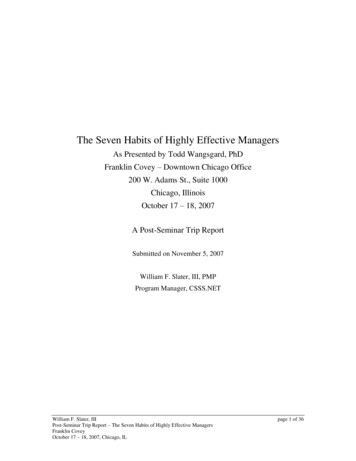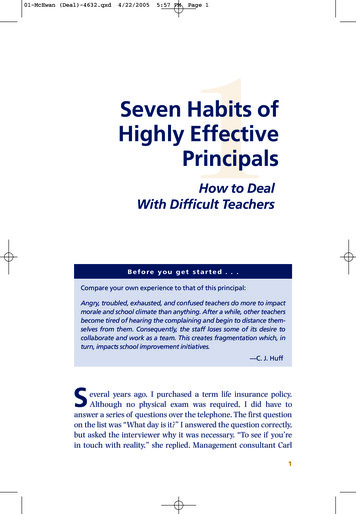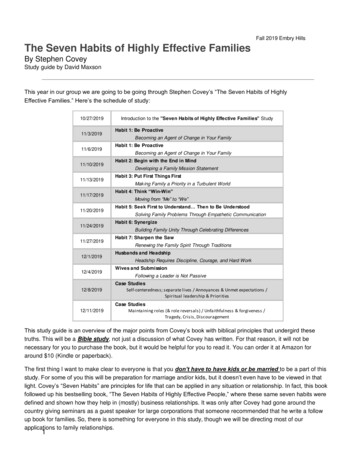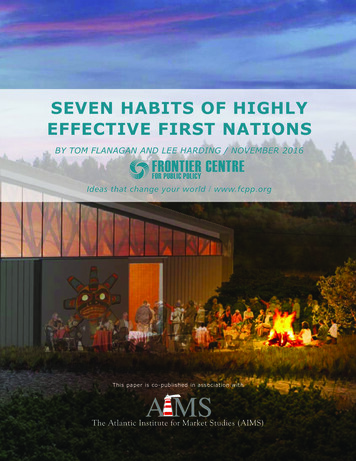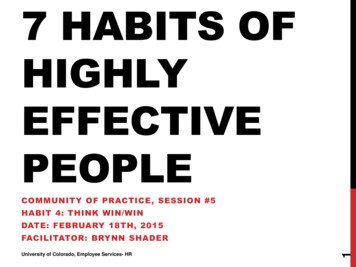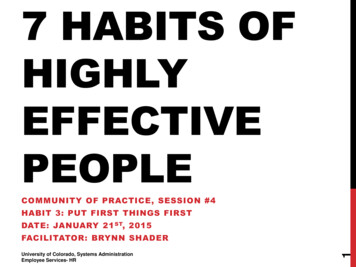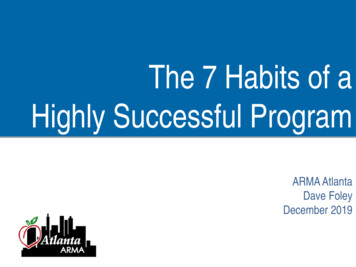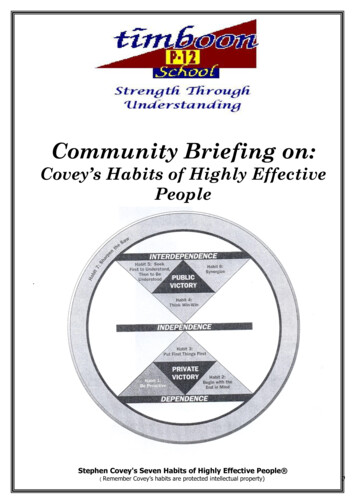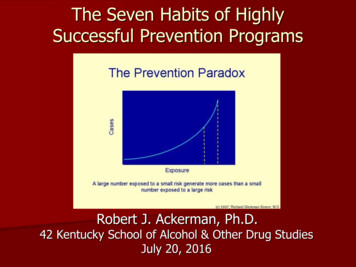
Transcription
The Seven Habits of HighlySuccessful Prevention ProgramsRobert J. Ackerman, Ph.D.42 Kentucky School of Alcohol & Other Drug StudiesJuly 20, 2016
Prevention Guiding PrinciplesAccurately assess the problem Who is at risk? What do you want to prevent? What level of prevention do you want toachieve? Are your prevention efforts primary ofsecondary?
What alternatives can be offered? The higher the level of risk for the targetpopulation, the more intensive theprevention effort needed.
The Seven Habits of EffectivePrevention Programs1. Early & sustained intervention*long term, repeated message andreinforcement of original preventiongoals*age-appropriate developmentally*aware of life transitions that mightincrease risk*intervene in appropriate settings anddomains
2. Community Based* Adapted to address the specific problem inthe local community* Community programs need to strengthennorms throughout the community andenhance “protective factors”* Reduce the availability of illicit drugs,alcohol, tobacco for the under-aged* Strengthen social bonding among familiesand community organizations
* Develop a community plan to include:– Assessment of the community problem– Identify community resources– Designate key players and programs to beinvolved* Utilize media to reinforce efforts of allinvolved organizations* Develop feasible objectives
3. Multi-systemic BasedMicroSystemsMesoSystemsExoSystems
Micro SystemsFamily Programs*Parent training skills*Home visits, provision of services, & parent needs*Education component for parents about children’sproblems*Programs should refer to/provide counseling servicesto the family*Inform parents about what children are learning inprevention*Family focused prevention efforts have greater impactthan parent focused or child focused only
*Individual attentionInvolvement of youth in decision makingand world of community and workAssessing resistance and peer influence
Meso Systems*Staff development for all caretakers andorganizations*Schools offer opportunities to subpopulations atrisk for drug abuse, teen pregnancy, abuse andother problems*Schools can offer multiple years of intervention*Schools can teach resistance and refusal skills*Utilizes faith-based organizations*Utilizes all community organizations in preventionefforts
Exo System*Involves the use of media, government,social policies, laws, corporations tosupport families, communities, andnational prevention efforts* “We Say No!” Campaign
4. Strengthens Life-Skills*Teaches resiliency and achievement skills*Teaches needed social skills*Teaches social competency and resistanceto peer influence*Teaches techniques for parents to raisetheir levels of confidence
Resiliency ChartProtective FactorsAchievement SkillsSocial IntelligenceResiliency SkillsRESILIENCYMoral IntelligenceEmotionalIntelligence
5. Interactive with IdentifiedPopulation*Assess levels of risk, protection, andsubstance abuse for that population*Includes a population assessment of riskand protective factors*Ensure that interventions are culturallyappropriate for the population*Targets all forms of the problem for thepopulation
6. Must Be Comprehensive*Directed towards the roles of all ages for prevention*Coordinates the activities of all personnel andorganizations towards the same goals and appropriatemeans keeping all in the same direction*uses strategies to assess if early risk behavior can bereversed through education and prevention efforts*Utilizes both primary and secondary prevention efforts
7. Program Management &Evaluation Management Ensure consistency and coverage of programsand policies Continued in-service training and educationfor staff and volunteers
Monitor and evaluate programsEvaluation:*what was done in the program?*how was the program carried out?*who participated in it?*was the program implemented asintended?*did the program achieve what wasexpected?*did the program produce the desiredlong-term effects?
The Seven Habits of Effective Prevention Programs 1. Early & sustained intervention *long term, repeated message and reinforcement of original prevention goals *age-appropriate developmentally *aware of life transitions that might inc


